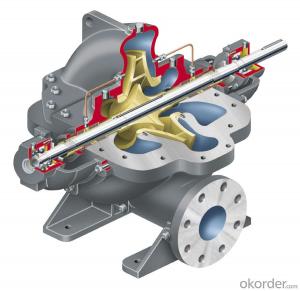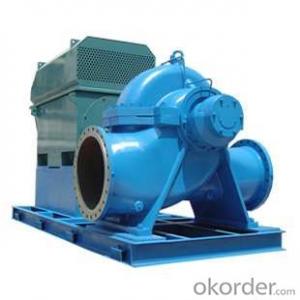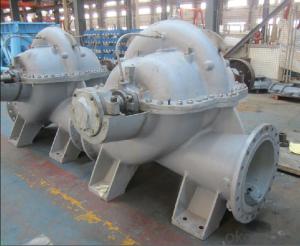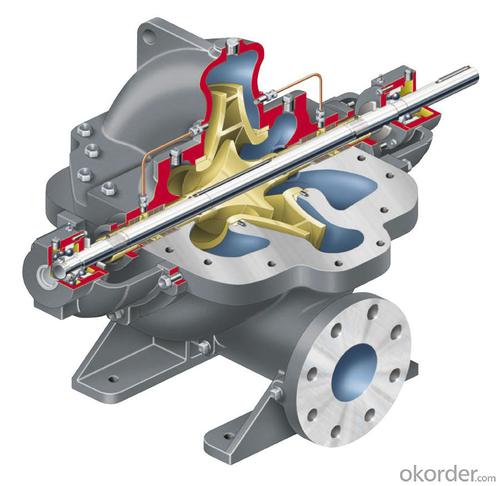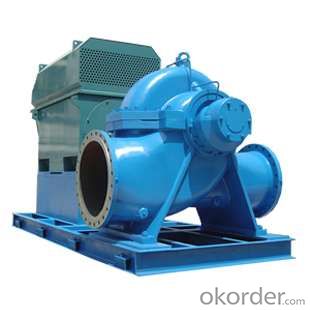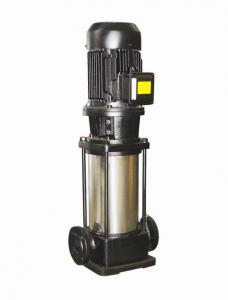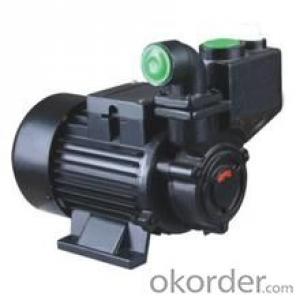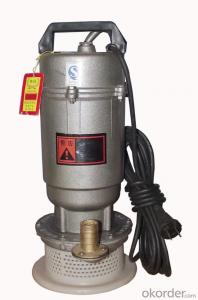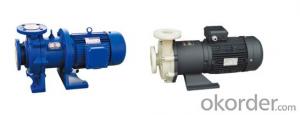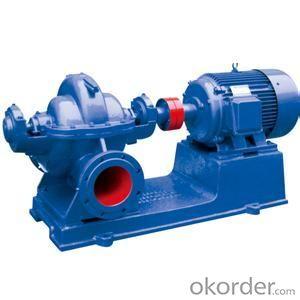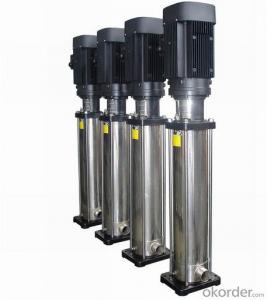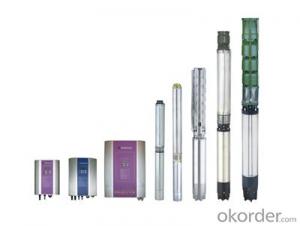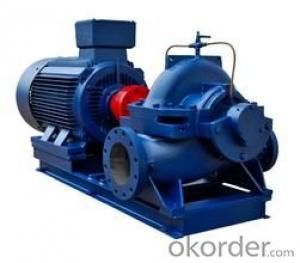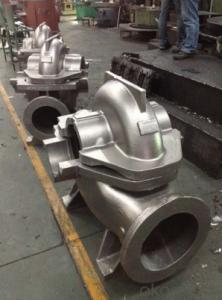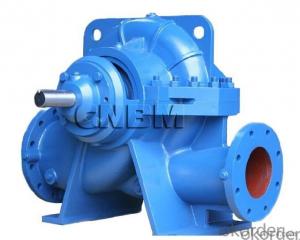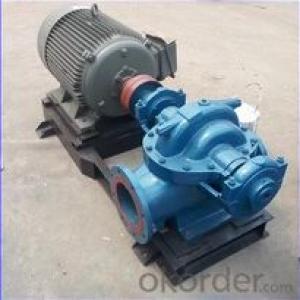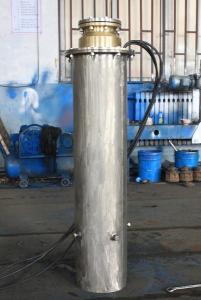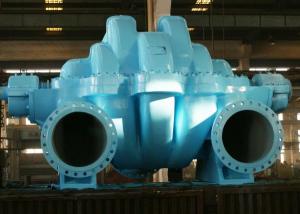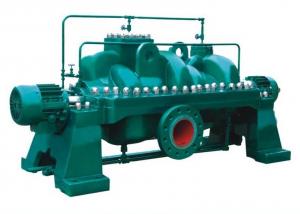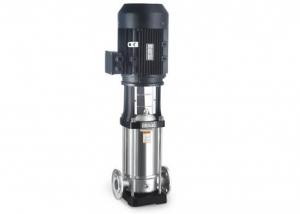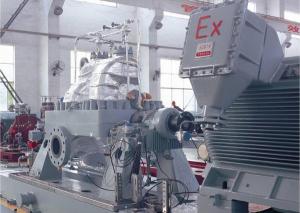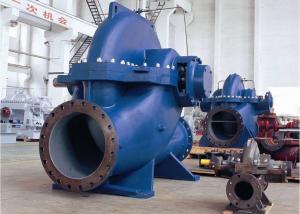Double Suction Agricultural Irrigation Water Pump
- Loading Port:
- Shanghai
- Payment Terms:
- TT OR LC
- Min Order Qty:
- 1 unit
- Supply Capability:
- 500 unit/month
OKorder Service Pledge
OKorder Financial Service
You Might Also Like
Double Suction Agricultural Irrigation Water Pump
Features of Double Suction Agricultural Irrigation Water Pump
Single Stage Double Suction Centrifugal Pump
Both the inlet and outlet are below the shaft axis of pump, so it doesn't need to disassemble pipes and motor for check or repair
Pump shaft seal can be mechanical seal and soft packing seal3) Pump can be directly driven by motor or by gas engine if necessary
Application of Double Suction Agricultural Irrigation Water Pump
Electric stations
Fire fighting
Irrigation
Municipal
Industrial water supply system
Operating conditions of Double Suction Agricultural Irrigation Water Pump
Flow: 50-36,330m³/h
Head: 8-160m
Medium temperature: ≤105°C
Operation pressure: ≤25 bar
DN: 80-1,600mm
FAQ
Q: How can I get trained on CNBM products?
A: Yes, we provide training courses in our factory (products, general and specific pump technology, hydraulics, and practical applications). Please consult your sales manager or get in touch with our headquarters for more information.
Q: Are your pumps cheaper than those of your competitors?
A: CNBM aims to give its customers the highest standards of quality and service and delivery times, all at a reasonable price.
Q: Do you have self-priming pumps?
A: Yes, our product portfolio also includes two ranges of self-priming pumps: self-priming electric pumps and self-priming side channel pumps.
Q: Is it really necessary to fit a bleed valve for the boxes?
A: It is always best to have a bleed valve as the gas produced by the fermenting sewage is potentially hazardous.
Q: If I increase the power of the motor, must I also increase the power of the inverter?
A: You must select the size of converter that allows maximum absorption of the electric motor.
Q: Do you have pumps with grinders?
A: Yes, the WQ models.
- Q: How many lift pumps should be used for 100 meters tall buildings?
- Specific to calculate pipeline loss in order to know.. According to my experience, feeling that life would be 130 meters -140 meters to 110 meters can fire if the premise is the roof of a pump group
- Q: I have a 1969 Chrysler with a new 3 core radiator. It still has the stock water pump and I am wondering if a high volume pump would make it run cooler at higher speeds. It runs hotter when you get off the freeway. I have flushed the system and installed a new thermostat. I also replaced the fan clutch. I am at a loss of why it still runs warmer than the 180* thermostat.
- maybe the fan is too far away from the radiator to efficiency pull the air at slow speed. They sell spacers.
- Q: need lincoln 01 water pump and radiator do 2000 parts fit an 01?
- never okorder and type in your data. hit radiator. click on product and hit the compatability button. if its the same, it will be listed almost surely.
- Q: Im an SHO fan looking to get another one. The car I'm looking at is a 1991 Taurus SHO. Price is pretty cheap and nothing wrong with it except he said the water pump will need replaced soon. Ive looked at water pumps and Im aware of cost. Im decently savvy with car repair but there are a few things ive never learned. How easy is it to replace a water pump? Should I have a go at it myself or is it better to be done professionally? What is the general cost for a garage to switch out the water pump?
- that will depend on the type
- Q: For the past couple days my car has been over heating quickly and there ha been some leaking underneath my car. well I went to start my car today to run to the store and the heating gauge was going up and down from overheating to perfectly fine within seconds...I popped the hood and there was antifreeze spraying on the engine. So my friend that I called said that meant there was a leak in my water pump. The autoshop in town is busy with over cars all day, I already called, and there isn't another shop within 15 miles. I work in 3 hours, and the drive is 30 minutes away. I have no other way to get to work, is it safe to drive my car or should I call in and let my manager know I can't make it? I have been working there almost 2 months and have never been late or called in.
- The simple answer is five minutes. you may consider a taxi. It's a lot cheaper than replacing an engine for one day.
- Q: Water pump quot;leakingbut not dripping anything. how important?my 04 tacoma has a quot;leaking water pumpquot;. I just see some pink fluid around the seals, nothing is dripping. toyota dealer didnt make a big deal about it, just said i should get it done soon. heck they didnt even tell me, i just saw it on the receipt.other mechanics said the same thing. quot;whenever u want to do it we'll do it.is it not an hugely important mechanism or what? how long can i go without doing it? the first symptom would be the engine getting a little hotter? its been like that for 5-6 months.
- Just keep an eye on your fluid level. But if you are planning any long trips i'd get it taken care of
- Q: My car is 3 years old and it only has 18,000 miles on it and I just got it back from the repair shop at the dealership because the water pump broke. They replaced the water pump and something else that was recalled. But I looked online and found water pumps should last a long time. What might have happened to it, and what would cause it to break?
- water pumps are cast aluminum normally...maybe there was a weak spot on the pump casting and it failed (but you would of overheated and had a mjor coolant loss that you would of noticed), or maybe the impellor is what internally failed and or the bearing on the shaft.. but yes normally water pumps last for awhile. I usually dont see replacement of water pumps unless doing timing belts and or high milage...but hell annything nowadays since everything seems to be made in China is cheap and poorly built compared to the old days...
- Q: I am trying to evaluate my well water pump and water system to see if the pump is cycling on/off too frequently. What is the optimal quot;ontime? What is the optimal quot;offtime? I have heard the term quot;short cyclingquot;, but no times were attached. I have heard that too frequent cycling can cause a problem, but, again, no times were attached. How can one tell when the system is working within the optimal/normal range, so that no harm is being caused to the system? Thanks.
- There is no optimum time. This is dependent on several factors. Assuming you are pumping into a small tank which is pressurized by the inflow of water from the pump (and the pressure also controls the pump) these reasons can be excessive use of water, the air space at the top of your tank has been absorbed into the water over a period of time and the volume of compressed air too small causing the pressure to drop too fast, or you could have leak in your water piping. If there is not enough air space in your tank, the pump will cycle extremely fast. If you don't have a tank, then the above information is incorrect. Good luck.
- Q: A pump is said to be capable of pumping water up to 100 meters, but I don't want to confirm that by actually putting up a very long pipe to that height. I know that pressure is related to height, so putting pressure at the output end of the pump would simulate different heights. Any suggestions how I can rig a contraption to do this? Thanks.
- *you can go by the 1st answer as pressure gauge near the pump discharge would give a maximum pressure inclusive of losses. As the losses are more[due to piping congetion or rasistance from the equipment to which it is pumping.] then the discharge head will be decreased. *Simply, in case of a centrifugal pump,close the discharge valve fully for a moment and check the discharge pressure. This is the maximum pressure ,your pump will pump. *Dont do this if the pump is positive displacement pump/regenerative turbine pump. Edit: Discharge head means pumping height in your case.
- Q: i have a 99 Mitsubishi Eclipse and my Car started to leak water and as soon as i start to put water it starts to leak and it wont take in the water that has on the side as well. what should i do or what do you recommend?
- You did not mention the sub-model of your eclipse (if it is a spyder or not) so there is no way to know the engine option, the2.0L (non-turbo) the 2.0L (turbo) or the 2.4L? But you don't have too many options! If the water runs out of it as soon as you put it in then obviously you cannot drive it or you will do further damage to the vehicle. You need to be able to see where it is coming from (as it shouldn't be too hard by the amount it is leaking. If the water is coming out from behind the timing cover then there is an issue with the pump, but, as the other poster said, it may also be a split hose!
Send your message to us
Double Suction Agricultural Irrigation Water Pump
- Loading Port:
- Shanghai
- Payment Terms:
- TT OR LC
- Min Order Qty:
- 1 unit
- Supply Capability:
- 500 unit/month
OKorder Service Pledge
OKorder Financial Service
Similar products
Hot products
Hot Searches
Related keywords
